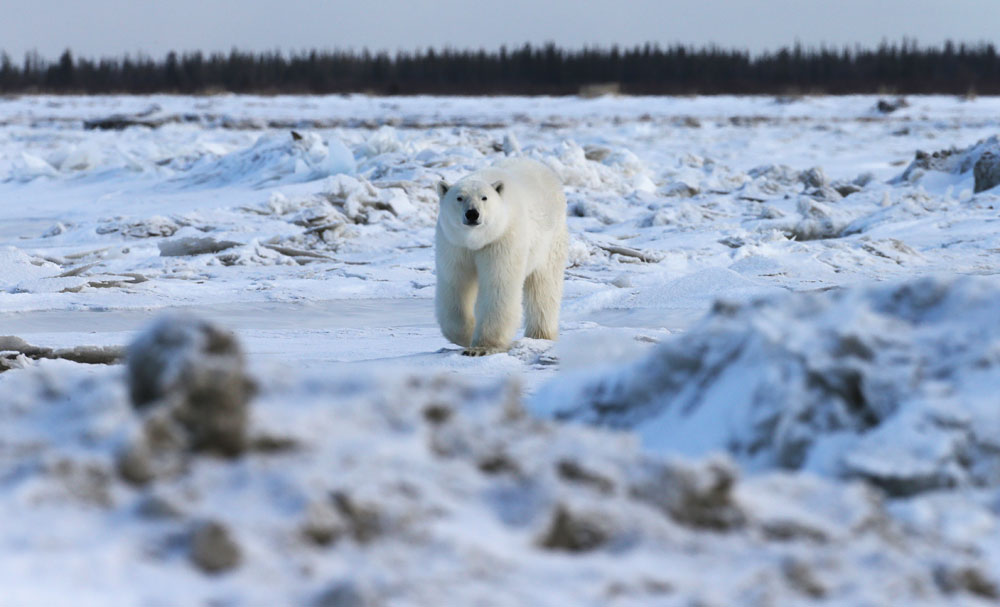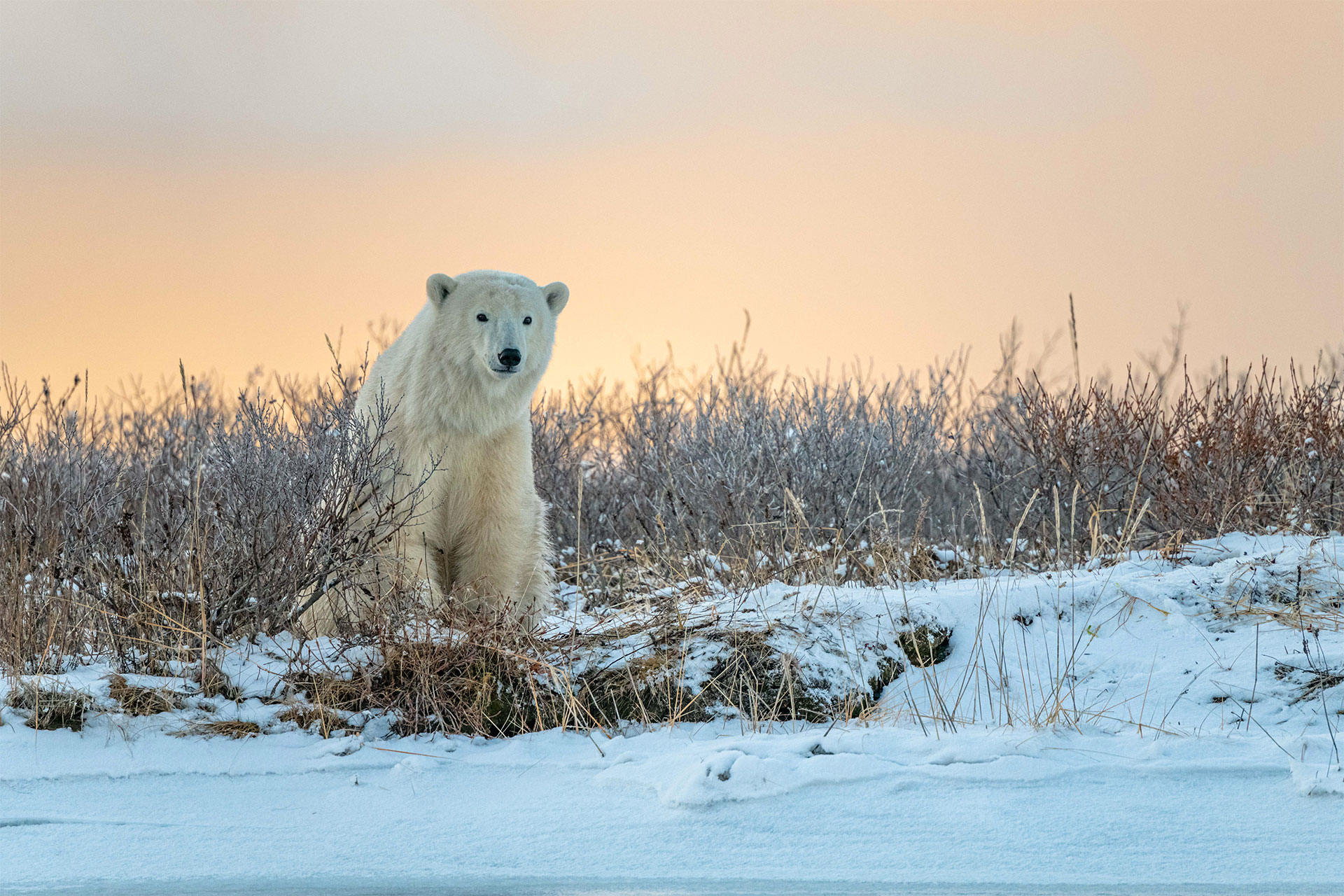
Polar bear walking through ice jams at Nanuk. Soren Hansen photo.
by Jimmy MacDonald
Here at Nanuk Polar Bear Lodge on the southwest shores of Hudson Bay, we find ourselves sitting and waiting for polar bears, but also waiting for a transition. Snowfall is blanketing the landscape and coating the forests.
Waterways are sealing up as the muskegs begin to freeze, sending a constant flow of ice pans to the shoreline of the bay. Ice is jamming up and thickening along the coastline in this highly dynamic zone. In Inuktitut, this season required a more specific name than fall or winter: Ukiaqsaaq, or freeze-up. Ukiaqsaaq is a season when the land becomes covered in snow, but the sea is still open water.
Polar bears require the sea ice. This fact is well known. Travel on the sea ice is easier for a bear, and it spends the majority of its life out on the ice. The bears we are seeing are those that have swum in off the last ice of summer and become shore bound, dispersing along the coast of Hudson Bay.
As their patience for the cold and freeze-up wears out, the polar bears will begin migrating west to Cape Churchill, where the first ice floes begin to accumulate in the bay, and they can once again take to the ice. The approximately 850 polar bears in the Western Hudson Bay sub-population are eager for Hudson Bay to become ice covered again, which will allow them to begin hunting seals and end their period of fasting.
The similarities are oddly apparent when comparing our position to that of the polar bears. Our travel has been restricted from the lodge, making our accessible area this small island in-between the east and west branches of the Opoyastin River. Ice jams to the east and west have backed up the flow of the rivers, but the muskegs still have not stopped flowing, resulting in flooding over the banks.
Looking to the coast, these ice jams are held back by strong north winds and high tides, making it difficult for the ice to solidify, and for travel (for polar bears and humans). Our location at Nanuk Polar Bear Lodge provides us with great views of the bears transiting the coastline, as they slowly progress through the flooded river mouths and unconsolidated ice floes out on to the still unfrozen tidal flats.
Luckily, for us, we are sitting and watching the bears from the deluxe comforts of the lodge, with hot drinks in hand and fresh cookies straight from the oven. This is a welcome respite from our daily forays into the harsh environment, and helps us appreciate and relate to the difficult challenges polar bears are facing due to the changing climate.









